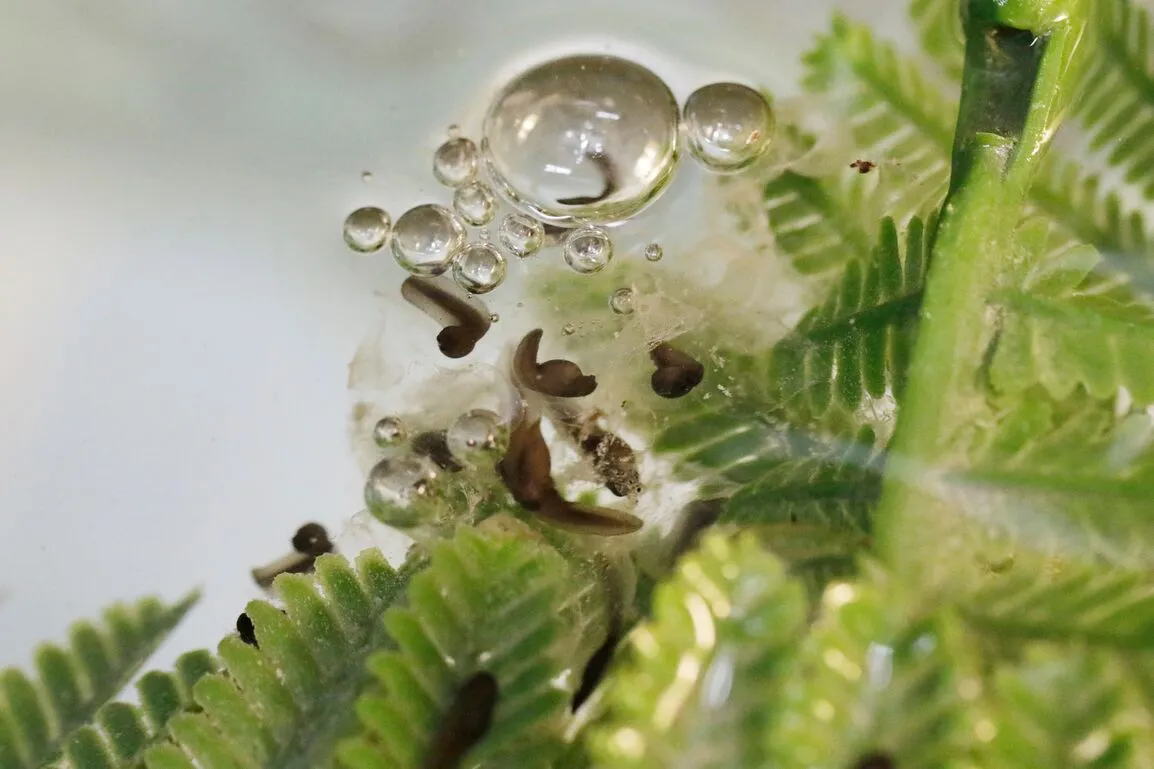In June 2019, the last-known 14 Loa water frogs (Telmatobius dankoi) were rescued from perilously dry conditions near the city of Calama in the Atacama Desert by conservationists from the National Zoo of Chile.
Indigenous leaders and conservationists discovered that the habitat of the water frog had almost completely dried up due to water extraction used for mining, agriculture, and real estate development in an area where water is scarce. The 14 surviving frogs were found malnourished and near death in a tiny pool of muddy water.
As the survival of their species in the wild without intervention was very unlikely, the frogs were taken to the National Zoo of Chile to be nursed back to health, and to rear future generations in order to bring the species back from the very brink of extinction.
Although the task of rearing a species that no one has previously attempted to care for before is a challenging one, the breeding programme at the zoo has so far been a great success, with the hatching of nearly 200 Loa water frog tadpoles.

But while this is certainly something to be celebrated, the larger challenge is to secure a safe habitat for the frogs in the wild.
“While the zoo rears these tadpoles and breeds additional pairs, it is important that the government continues the great work it started in rescuing the animals by restoring and protecting the frogs’ habitat so that they can return to their home in the wild,” said Lina Valencia, Global Wildlife Conservation’s Andes conservation officer.
There are at least 63 known species of water frogs in South America, with around 10 living in Chile. Being semi-aquatic, or entirely aquatic, they are extremely sensitive to changes in their environment, making them very vulnerable to climate change. They are also threatened by habitat destruction, pollution, disease, and invasive trout.
Many water frogs are microendemic, meaning that their habitat is found in one small location. The Loa water frog was once found only in a single stream in Chile, and experts estimate that there may be between just 5 and 8 individuals still alive in the wild.
But conservationists are hopeful that they can turn the bleak future of the Loa water frog around, having already achieved 2 of their 3 objectives, as Martin Andrade, director of Metropolitan Park of Santiago, explains: “The first [objective] was the survival of the frogs that arrived from Calama as part of an emergency rescue operation, the second was the reproduction of these animals, and the third objective, which will take longer, is the reintroduction of this species back into its natural habitat.”
Main image: Loa water frog. © Claudio Soto